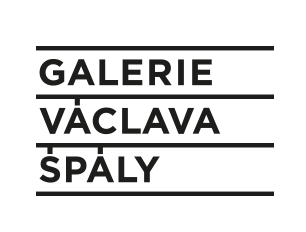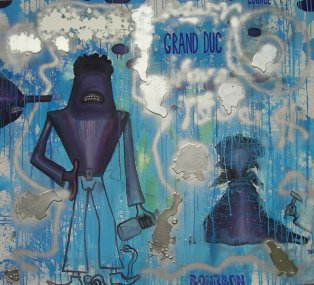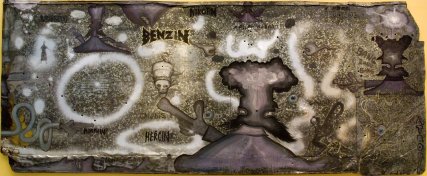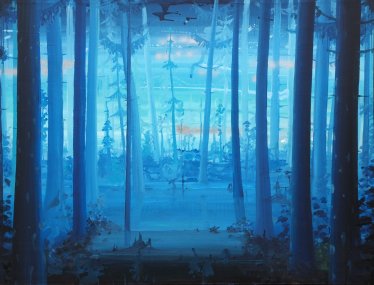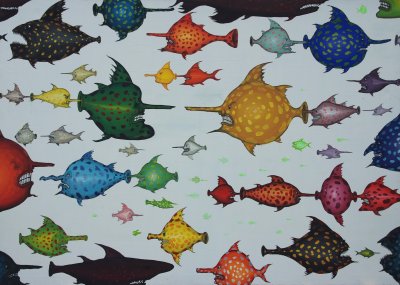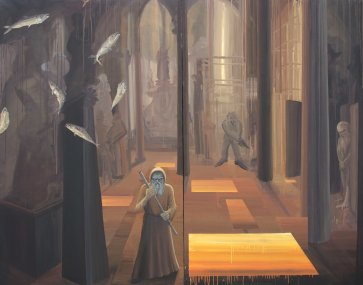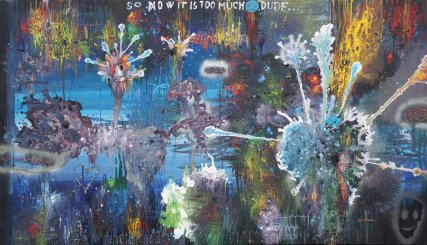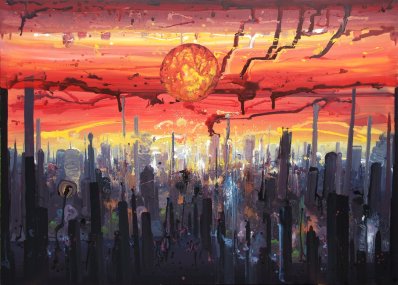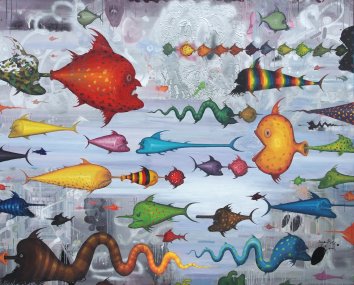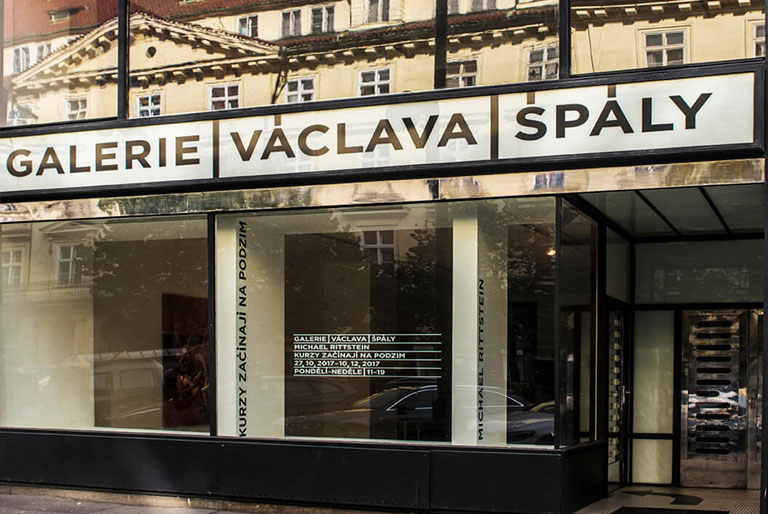Archive
Roman Trabura
29. 6. — 2. 9. 2012
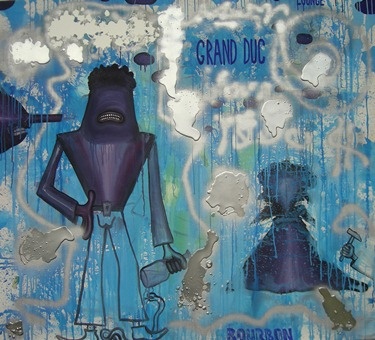
Light Obsession. Is it obsession with light or insignificant obsession? It can mean both with Roman Trabura. Ambivalence is typical for him. It can be one way or another.
Light Obsession. Is it obsession with light or insignificant obsession? It can mean both with Roman Trabura. Ambivalence is typical for him. It can be one way or another.
The obsessive urge compels Trabura to carry out changes, thus some figures have gained new and more forceful attributes, such as a bazooka or a car with red lights disrupting a romantic forest idyll.
The phenomena of light and the shadow as its counter aspect along with his carefully planned approach to light belong to essential and almost constant features of Trabura’s painting. Light and its colour spectrum make the world more visible and Trabura has been dealing with the former in his work incessantly, almost on the verge of obsession.
The historical and emotional experience teaches us that the light which radiates from an object and is autonomous isn’t important for the real world perception, but enhances mystical dimension. In contrast, the light which illuminates the object, respects the principles of optics and the usual sensory experience. Trabura’s interior of a church is illuminated by sheaves of light from outside in compliance with our sensory perception of the world – here the stream of sunlight. Yet at the same time, the space illuminated by the sunbeams also possesses the character of emanation. We can thus experience baroque mystique of light in the landscape beyond which we can sense another dimension or size.
In Trabura’s works the world, both visual and perceived overlaps. Crannies, light slits and other gaps or underwater sights give us the feeling of catching a glimpse of a different world behind the curtain, like a medieval painter who lifts up the tip of his canvas and exposes another happening, expressing the conflict between one’s own feelings and the period knowledge of the real world.
In his distinctive approach to space and light augmented by obsession Trabura, the narrator contemplates the dualism of good and evil, rephrases, points to the history and present times and makes comments. He comes up with puzzles and dualistic whims. He fools in a serious way, his sarcasm is gentle. His graffiti on tin banners isn’t just a manifestation of adolescent scepticism. It works as a weight drawing down into the cellar the idealistic thoughts and ideas of spaces beyond the horizon which are trying to fly away. The potential freshness is laden with the zeitgeist of the end of millennium and the adult soul of the true ironic and sceptic with faith isn’t afraid to admit his longing – light slit – for the harmony of a forest glade.
Deification balances on the verge of devaluation. Peculiar figures meet and pass by in surreal settings. A lady is walking her dog; silver plastic excrement still seems to be wet. Skyscrapers are exploding in colourful fireworks. Omnipresent feeling of looming disaster is intensified by storm clouds above the country. Apophis has bypassed the Earth unlike in Melancholia by Larse von Trier. The sea is overflowing, colours are pouring down; a view beneath the surface of the sea is a glance into the depth of the unconscious. Once upon a time is becoming real.
Lucie Šiklová
Works on display (a selection)
Roman Trabura
GalleryVáclav Špála
Národní 30, 110 00 Prague 1, Czech Republic
Open daily 11 AM – 7 PM
Closed: 24. - 26. 12., 31. 12. a 1. 1.
E-mail: info@galerievaclavaspaly.cz
Admission 40 CZK
For students 20 CZK
/ seniors and disabled holders 50% discount
